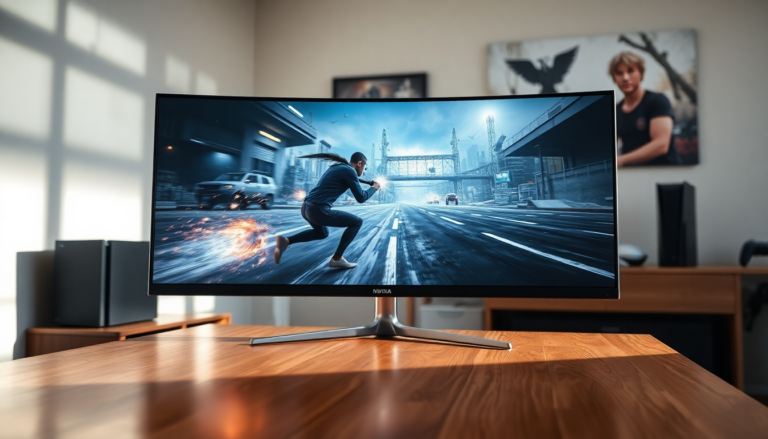Argomenti trattati
Imagine sitting down to play your favorite game, and suddenly, the visuals become smoother than ever before. This is not just a dream; it’s the reality brought by Nvidia’s Smooth Motion technology, which has now expanded its horizons. Initially exclusive to the RTX 50 series, this innovative driver-based frame generation technology has recently received a significant update, allowing it to support Vulkan titles alongside the traditional DX11 and DX12 APIs. This is a game-changer, and for anyone who has experienced frame drops or choppy visuals, it’s nothing short of a revelation.
The breakthrough with Vulkan support
So, what does this Vulkan support mean for gamers? Well, for starters, it opens up a treasure trove of gaming possibilities. Previously, Smooth Motion was limited to a relatively small pool of games, primarily those built on DX11 or DX12. But with Vulkan being a powerful and flexible API, its inclusion means that not only are contemporary titles now playable at enhanced frame rates, but older games that can be emulated through Proton or DXVK can also benefit from this technology. I remember when I first tried to run an emulator; the experience was often stuttery—now, with this advancement, it feels like a completely different game.
What is Smooth Motion?
In essence, Nvidia’s Smooth Motion serves as a direct competitor to AMD’s Fluid Motion Frames (AFMF). It operates at the driver level, generating entirely new frames for a smoother gameplay experience. Unlike traditional frame generation methods embedded in the game engines, Smooth Motion works independently, which means it can enhance any game that meets its API requirements. This developer-agnostic approach is what makes it so appealing. Imagine the possibilities: an old favorite suddenly running as smoothly as a new release—it’s like breathing new life into your gaming library.
Comparing Nvidia and AMD’s approaches
When we stack Nvidia’s Smooth Motion against AMD’s AFMF, the competition gets interesting. While both technologies aim to deliver smoother visuals, they take different paths. For example, while AMD’s AFMF supports a wide range of Radeon GPUs, Nvidia’s current limitation to RTX 50 series GPUs raises eyebrows. Yes, there’s talk of future updates potentially bringing compatibility to the RTX 40 series, but as of now, it feels a bit like being left out of the party if you own older hardware.
But here’s the kicker: Smooth Motion relies on AI to generate new frames, enhancing the overall image quality in a way that’s simply more refined. In contrast, AMD’s solution, while effective, utilizes a more traditional method that isn’t AI-based. Personally, I believe this gives Nvidia an edge—there’s something inherently appealing about leveraging AI for a smoother experience, right? It’s like having your cake and eating it too!
Future enhancements and expectations
Now, let’s talk about the elephant in the room: the future of Smooth Motion. As many know, the tech world is always in a state of flux, and it’s only a matter of time before we see updates rolling out. Will RTX 30 or 20 series GPUs join the party? That’s still a big question mark. The anticipation surrounding the potential for older models to access this technology is palpable. I can’t help but think of my friends who still cling to their RTX 20 series cards, hoping for a taste of the latest advancements.
As we look ahead, it’s clear that Nvidia is making strides, yet there’s much to be done. The gaming landscape is evolving, and the demand for smoother gameplay experiences is only going to rise. We live in an age where gamers are not just looking for better graphics but also for seamless performance. As technology continues to progress, it’ll be fascinating to see how both Nvidia and AMD adapt and innovate to meet these needs.
Final thoughts
In the end, the introduction of Vulkan support into Nvidia’s Smooth Motion technology marks a significant milestone in the gaming industry. It’s a reminder of how rapidly things can change in tech—what was once a limitation is now a gateway to new experiences. For gamers, this is not just about enhanced visuals; it’s about enjoying games the way they were meant to be experienced. So, whether you’re running the latest titles or diving into classic games, keep an eye on how these technologies evolve because the best is yet to come.

